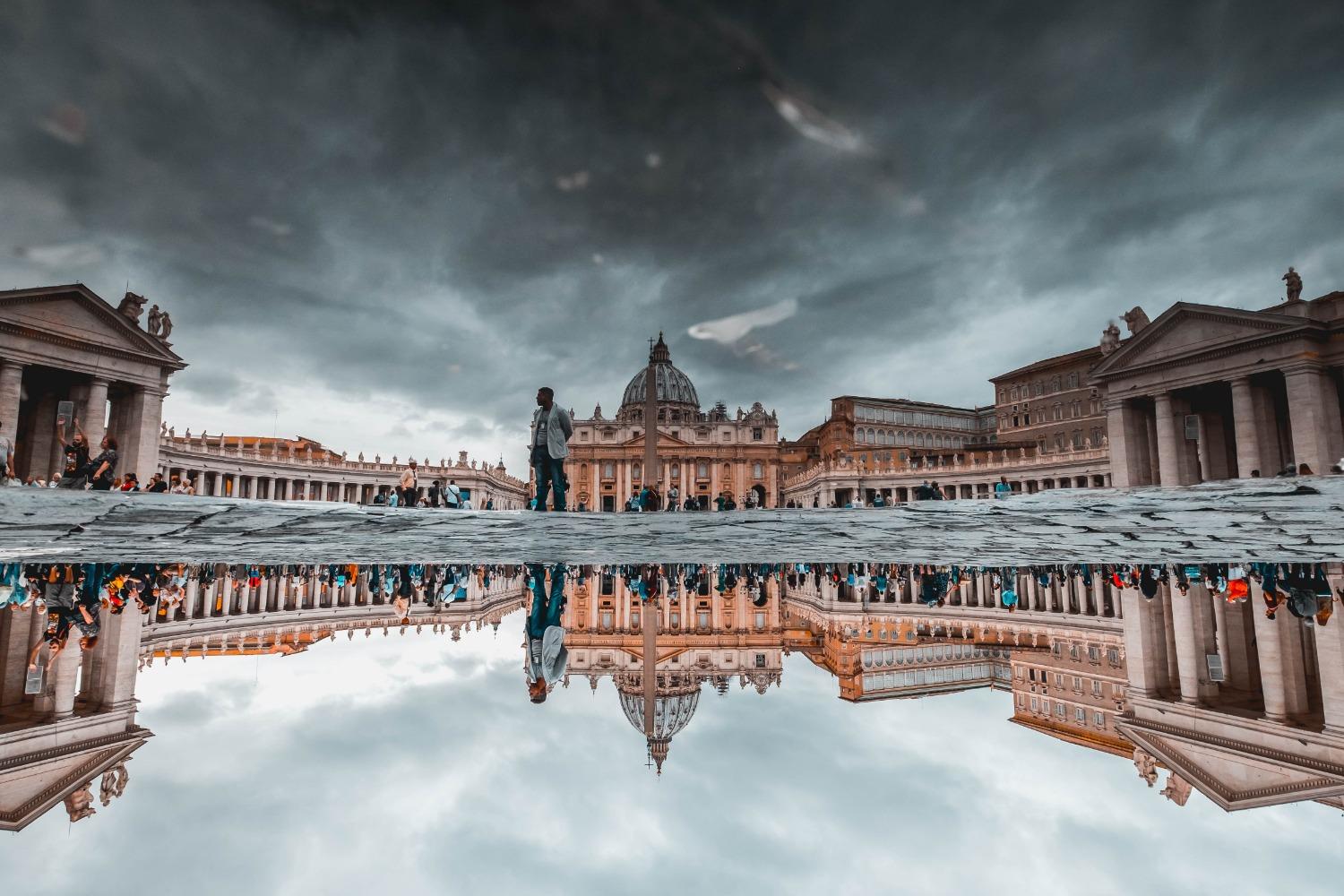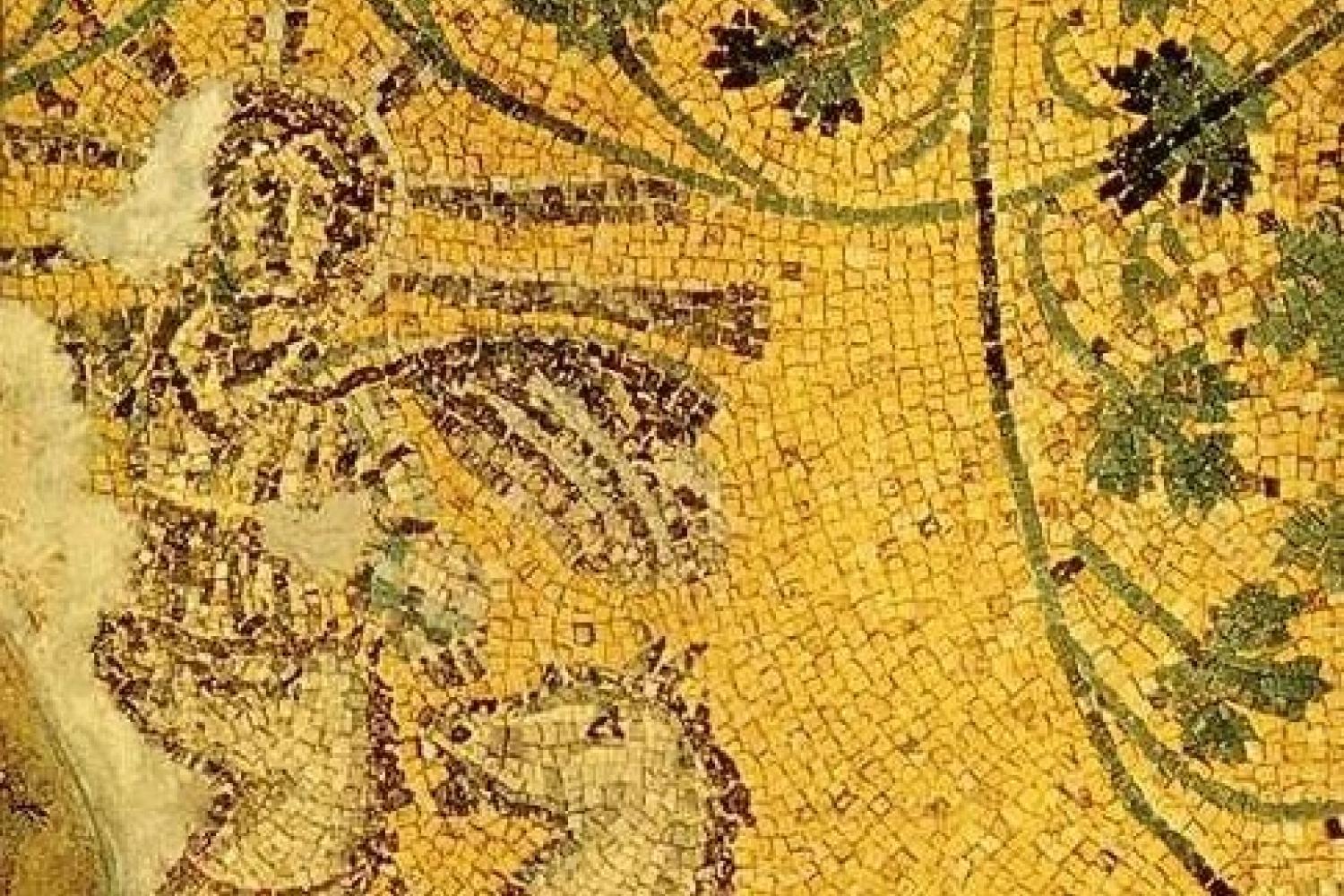
“Amen, amen, I say to you, when you were younger, you used to dress yourself and go where you wanted; but when you grow old, you will stretch out your hands, and someone else will dress you and lead you where you do not want to go” (John 21:18).
Jesus says that to Peter after the Resurrection. As with so many of their experiences with Jesus, Peter and the apostles continue their discipleship through the outpouring of the Holy Spirit and years of proclaiming the Good News. What did Peter do with his confessional encounter? How did it affect him? John the Evangelist tells us what it eventually means: “He said this signifying by what kind of death he would glorify God,” but for the moment, Peter is simply assured of three things: growing old, stretching out his hands, and being dressed and led in a direction he will not want. What does that look like?
It looks like the Scavi, a step-by-step unfolding of Peter’s final and lasting moments in Rome. The Vatican’s excavations (1940-1949) beneath St. Peter’s Basilica were arguably, next to the discovery of King Tut’s tomb, the most remarkable archeological site of the 20th century. Although the tomb of St. Peter beneath the high altar of the Basilica had always been a place of religious importance, scientific investigation would serve to amplify the history of a fisherman who followed Jesus and pondered his words.
After passing the Swiss Guards to enter the 114 acres of Vatican City, the pilgrimage to the tomb of St. Peter begins in the place of the Protomartyrs. White marble marks the center of a Roman circus. Nearly a teenager at the time (AD 64), the Roman historian Tacitus explained how the Emperor Nero “punished with the utmost refinements of cruelty a class of men and women the crowd styled Christians” (Annales XV, 44). Thousands would be killed “not for the welfare of the [Roman] state” which had suffered catastrophic loss in late summer fires, but for the “ferocity of a single man.” Any leader of the Christians would be targeted by Nero’s savage scapegoating. The apostle Peter with hands outstretched on a cross looked upon a central obelisk when he dies in Nero’s circus. That same obelisk now stands in St. Peter’s square. It’s the first of many realizations during a Scavi tour that nothing is “casual or small” in the Christian’s vision.
A Roman “City of the Dead” is situated near the circus, and Peter’s body is placed in a poor man’s grave. Over the centuries, someone else will “dress” his body and he will become the center of two monumental achievements in architecture and art. Both Basilicas of St. Peter will be constructed on the exact spot of Peter’s burial. The necropolis and remains of the circus are effectively sealed under the foundations of a Constantinian (AD 326-1505) and Renaissance basilica (1506-present). They stand through the centuries “signifying by what kind of death he would glorify God.” All of the ecclesial grandeur arises from the gritty story of a fisherman’s self-gift.
The Scavi uncovers more of the story surrounding his martyrdom. Meticulously restored Roman tombs show humanity searching for a real life after death. Loving and affectionate epitaphs from three centuries of family mausoleums etch a narrative of longing to see loved ones again. Libations of wine and offerings of gold coins tell a visitor that holy ground surrounds the site of Peter’s burial. Pilgrimage involves more than a change of place, but a change of person. By the time one sees the bones of St. Peter in 19 NASA-made acrylic boxes, one has to wonder what changed a Galilean fisherman into a Roman martyr. All of his bones are accounted and displayed, except for Peter’s feet and ankles. Forensic physicians understand what happens when rigor mortis takes hold of Peter’s dying body. If the fisherman is hanging upside down, his fastened feet and ankles will separate from his legs and provide a space for Roman soldiers to simply chop through the strained connective tissue. Dispatching a poor, footless man from a cross, Peter’s body is ready to rest in a Vatican hillside. Nearly 2000 years later, restless pilgrims can gaze upon his bones and standing in the shadow of the dome, each has to personally contend with their own history of longing and following: Do I want life with God? What does my life mean? Is love stronger than death? Who can assure me of eternal life?
And when he had said this, he said to him, “Follow me.”
Jesus knows his disciples, and the Good News lies in the fact that He knows them better than they know themselves. Saint Peter allows us to see this relational dynamic in repeated displays of lacking or partial self-knowledge. “Not realizing what he was saying” (Luke 9:33) and “thinking not as God does, but as human beings do” (Matthew 16:23), Peter’s willfulness culminates when he vehemently denies the betrayal Jesus foretold: “Even though I should have to die with you, I will not deny you” (Mark 14:31). While it’s true that “all spoke similarly” in that instance, Peter represents all of our denials, which are rooted in the rejection of a fundamental spiritual reality, namely that “without me you can do nothing” (John 15:5). All disciples at some point will need to surrender the delusion of doing anything without Jesus, that real life is always a “following.” The Scavi promises every pilgrim that our growing and stretching and being led by Jesus does not end in shame. Jesus knows whom he is choosing. Life is glorious when we let him.

The First Draught
To receive the Weekly Update in your inbox every week, along with our weekly Lectio Brevis providing insights into upcoming Mass readings, subscribe to The First Draught.
